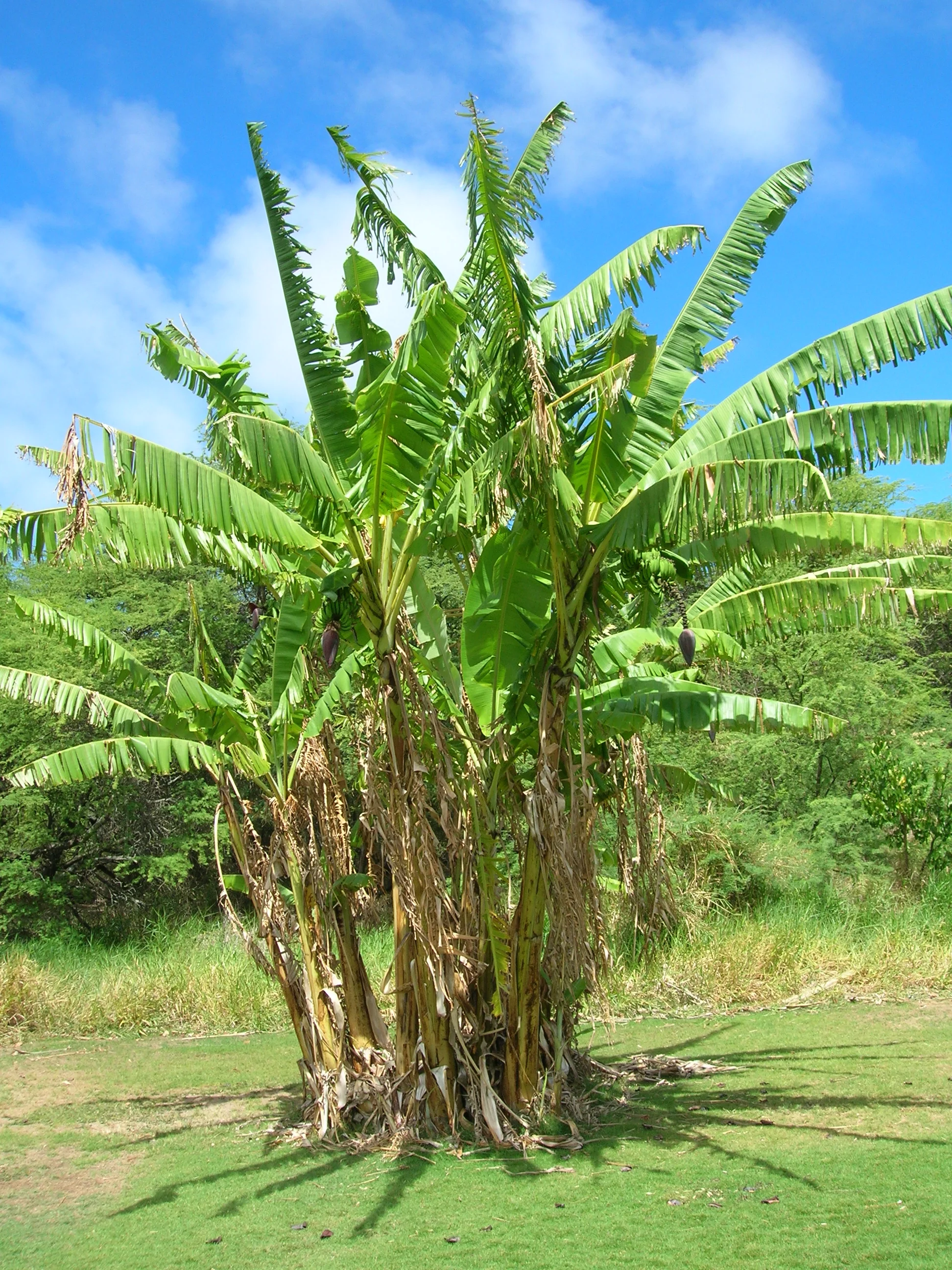Photo by endolith licensed under CC BY-SA 2.0
Bananas are one of the most popular fruits in the world. Love them or hate them, most of us know what they look like. Despite their global presence, few stop to think about where these fruits come from. That is a shame because bananas are fascinating plants for many reasons but now we can add blue fluorescence to that list.
Before we dive into the intriguing phenomenon of fluorescence in bananas, I think it is worth talking about the plants that produce them in a little more detail. Bananas belong to the genus Musa, which is located in its own family - Musaceae. Take a step back and look at a banana plant and it won't take long to realize they are distant relatives of the gingers. There are at least 68 recognized species of banana in the world and many more cultivated varieties. Despite their pan-tropical distribution, the genus Musa is native only to parts of the Indo-Malesian, Asian, and Australian tropics.
Photo by Forest & Kim Starr licensed under CC BY 3.0
Banana plants vary in height from species to species. At the smaller end of the spectrum you have species like the diminutive Musa velutina, which maxes out at about 2 meters (6 ft.) in height. On the taller side of things, there are species such as the monstrous Musa ingens, which can reach heights of 20 meters (66ft.)! Despite their arborescent appearance, bananas are not trees at all. They do not produce any wood. Instead, what looks like a tree trunk is actually the fused petioles of their leaves. Bananas are essentially giant herbs with the aforementioned M. ingens holding the world record for largest herb in the world.
When it comes time to flower, a long spike emerges from the main growing tip. This spike gradually elongates, revealing long, beautiful, tubular flowers arranged in whorls. For many banana species, bats are the main pollinators, however, a variety of insects will visit as well. In the wild, fruits appear following pollination, a trait that has been bred out of their cultivated relatives, which produce fruits without needing pollination. The fruits of a banana are actually a type a berry that dehisce like a capsule upon ripening, revealing delicious pulp chock full of hard seeds. Not all bananas turn yellow upon ripening. In fact, some are pink!
CC0 Public Domain
For many fruits, the act of ripening often coincides with a change in color. This is a way for the plant to signal to seed dispersers that the fruits, and the seeds inside, are ready. As many of us know, many bananas start off green and gradually ripen to a bright yellow. This process involves a gradual breakdown of the chlorophyll within the banana skin. As the chlorophyll within the skin of a banana breaks down, it leaves behind a handful of byproducts. It turns out, some of these byproducts fluoresce blue under UV light.
Amazingly, the fluorescent properties of bananas was only recently discovered. Researchers studying chlorophyll breakdown in the skins of various fruits identified some intriguing compounds in the skins of ripe Cavendish bananas. When viewed under UV light, these compounds gave off a luminescent blue hue. Further investigation revealed that as bananas ripen, their fluorescent properties grow more and more intense.
There could be a couple reasons why this happens. First, it could simply be happenstance. Perhaps these fluorescent compounds are simply a curious byproduct of chlorophyll breakdown and serve no function for the plant whatsoever. However, bananas seem to be a special case. The way in which chlorophyll in the skin of a banana breaks down is quite different than the process of chlorophyll breakdown in other plants. What's more, the abundance of these compounds in the banana skin seems to suggest that the fluorescence does indeed have a function - seed dispersal.
Researchers now believe that the fluorescent properties of some ripe bananas serves as an additional signal to potential seed dispersers that the time is right for harvest. Many animals including birds and some mammals can see well into the UV spectrum and it is likely that the blue fluorescence of these bananas is a means of attracting such animals. Additionally, researchers also found that banana leaves fluoresce in a similar way, perhaps to sweeten the attractive display of the ripening fruits.
To date, little follow up has been done on fluorescence in bananas. It is likely that far more banana species exhibit this trait. Certainly more work is needed before we can say for sure what role, if any, these compounds play in the lives of wild bananas. Until then, this could be a fun trait to investigate in the comfort of your own home. Grab a black light and see if your bananas glow blue!



